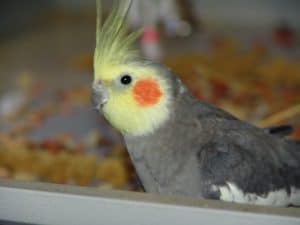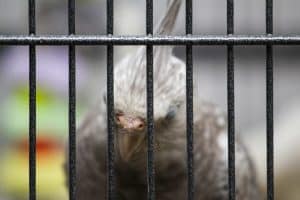Do you have a cockatiel at home? If so, you may be wondering when the time is right for them to start mating. It can be tricky to tell when your cockatiel is ready to mate, but in this blog post, we will teach you everything you need to know! We’ll discuss cockatiel mating behavior and how you can tell if your bird is ready to get busy. So keep reading for all the information you need on this topic!
Signs That Your Cockatiel Is Ready to Mate: Cockatiel mating behavior
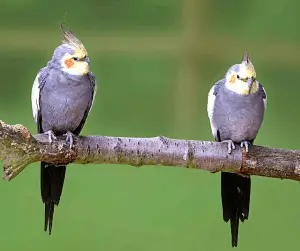
If you own a cockatiel, you may be wondering if the time is right for your pet to find a mate. After all, cockatiels are social creatures and usually do best when they have a companion. Here are a few things to look for that may indicate that your cockatiel is ready to start the mating process.
Changes in Behavior
One of the first things you may notice is a change in your cockatiel’s behavior. If your pet starts spending more time preening itself or singing more than usual, it could be a sign that he or she is trying to attract a mate. Male cockatiels will also often start bobbing their heads up and down as part of their mating dance. The courting behavior of cockatiels is usually a good indication that your pet is ready to start a family.
Changes in Diet
Another way to tell if your cockatiel is getting ready to mate is by observing its diet. Just like humans, when animals are preparing for reproduction, they often experience increased appetites. If you notice your cockatiel eating more than normal or taking an interest in food that it previously ignored, it could mean that he or she is getting ready to mate.
Nesting Behavior
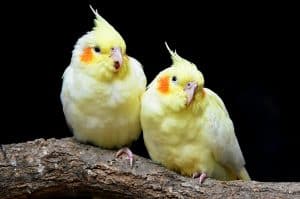
Finally, if you see your cockatiel collecting nesting materials or paying more attention to his or her cage, it’s definitely time to start looking for a mate. Cockatiels typically lay their eggs in tree cavities or cliff crevices, but in captivity, they will make do with whatever nesting materials they can find. If you see your pet gathering pieces of paper, string, or even feathers from other birds, it’s a sure sign that he or she is ready to start a family.
Appearance Changes
In addition to behavioral changes, you may also notice some physical changes in your cockatiel when it is ready to mate. For instance, the male cockatiel’s cere (the fleshy area around the beak) will turn bright orange or yellow color when he is ready to breed. The female cockatiel’s cere will usually stay a light brown or gray color. Additionally, both sexes of cockatiel will develop a patch of bare skin called a brood patch during the breeding season. This patch is located on the lower abdomen and helps to keep the eggs warm during incubation.
Vocalizations
One of the first signs that your cockatiel is ready to mate is an increase in vocalizations. Cockatiels pair for life, so they take mating very seriously. If your cockatiel starts cooing or whistling more than usual, it may be because he or she is trying to attract a mate.
Changes in Eating Habits
Both male and female cockatiels usually eat less when they are getting ready to mate. This decrease in appetite is due to the increased energy levels and excitement that come with finding a potential partner. If you notice your cockatiel eating less than normal, it could be a sign that he or she is getting ready to mate.
Posturing
Male cockatiels will often puff up their feathers and tilt their heads when they are ready to mate. This posturing is meant to impress potential mates and show off their masculinity. Female cockatiels may also tilt their heads, but they tend to do it more slowly and with less intensity than males.
What should you do if you think your cockatiel is ready to mate but don’t have a partner for them?
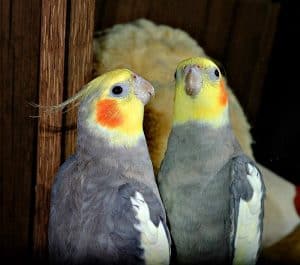
1. If you are not sure if your cockatiel is ready to mate, consult with a veterinarian or an experienced cockatiel breeder.
2. If you do not have a partner for your cockatiel, you can either find a willing partner or introduce a new bird into the flock to mate with your cockatiel.
3. Be prepared for the possibility that your cockatiel may not be interested in mating.
4. Make sure that you have a suitable nesting box available for your cockatiel if they choose to mate.
What are the risks of mating your cockatiel without proper preparation or supervision?
The risks of mating your cockatiel without proper preparation or supervision can include the following:
1. Poor health and well-being of the bird
Cockatiels need to be in good health before they mate. If they are not properly cared for, they may not be able to produce healthy offspring. Additionally, mating pairs need to be closely monitored in order to ensure that they are getting along and that the female is not being harassed by the male. Without proper preparation and supervision, mating cockatiels can pose a serious risk to the health and well-being of the bird.
2. Lack of knowledge on the part of the bird’s owner
One of the risks of mating your cockatiel without proper preparation or supervision is that the bird’s owner may not have the necessary knowledge to ensure a successful mating. For example, they may not know how to properly set up the cage, how to provide the right diet for the birds, or how to monitor the birds for signs of distress. Without this knowledge, mating can be stressful for the birds and may even result in injuries. In addition, if the birds are not properly supervised, they may start fighting or exhibit other undesirable behavior. Finally, unsupervised mating can also lead to inbreeding, which can decrease the overall health and vigor of the cockatiel population.
3. Inability to properly care for the chicks
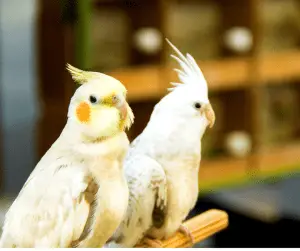
When two cockatiels mate, there is a chance that they will produce offspring. However, if the cockatiels are not properly prepared to care for the chicks, they may face a number of risks. First, the chicks may not receive enough food or water, leading to malnutrition or dehydration. Second, the chicks may be exposed to dangerous diseases or parasites if they are not kept in clean and sanitary conditions.
Third, the cockatiels may be injured if they try to mate without proper supervision. Finally, the chicks may be abandoned if the cockatiels are not capable of caring for them. As a result, it is important to make sure that you are prepared to care for the cockatiels and their chicks before you allow them to mate.
4. Misuse or mishandling of the chicks
This can lead to injuries, diseases, or even death. Second, the parents may not bond with the chicks, which can result in neglect or abuse. Third, if the cockatiels are not properly cared for, they may become malnourished or develop health problems.
When done correctly and with proper preparation, mating your cockatiel can be a rewarding experience for both you and your pet. However, it is important to remember that cockatiels are very delicate creatures and should only be mated under the supervision of a qualified veterinarian or cockatiel breeder. Additionally, you should be prepared to care for the cockatiels and their chicks if they decide to mate. Finally, make sure that you have a suitable nesting box available for your cockatiel if they choose to mate.
- LARGE WINDOWS & BREATHABLE MESH Roll up the sunshade of the bird travel cage and fix it. You can check the status of your pet at any time through the transparent window. The side of the bag is equipped with anti scratch ventilation net to ensure sufficient air circulation and wide vision in the bag.
- KEEP CLEAN & PERCHINGThe bird carrier will come with some portable garbage bags and a perch to help you keep clean when you travel and a comfortable travel for your bird.
- HEIGHTENING DESIGNUnique shape, light and lovely. The heightening design of the bird carrier travel cage meets the jumping behavior of birds.
- PORTABLE & LIGHTWEIGHTSuertree bird travel carrier is made of ultra light material, which makes it easy to carry. It can be carried by handle or hung on shoulder when going out. In addition, the bird cage can be tied to the car seat with a safety belt to ensure the safety of birds when driving.
- SIZE & SERVICE 12'' L x 9.4'' W x 12.9'' H. Suertree bird carrier size is suitable for most pet birds. Suggested for Cockatiels, Conures, Quakers, Caciques, Mini Macaws, Parakeet, small Cockatoos, Lories, and other similar size parrots. If you have any questions, please feel free to contact us. We provide 24h service.
How to Prepare for Cockatiel Mating Season
1. Vet checkups: Make sure both cockatiels have been cleared by a vet for mating, and that they are physically healthy and able to mate.
2. Housing: Provide plenty of room for the birds to mate without risk of injury.
3. Nesting materials: Offer a variety of materials for the birds to build a nest, including softwood shavings, straw, or cotton.
4. Timing: Be aware of the timing of the cockatiels’ reproductive cycles and allow them to mate at the appropriate time.
How many eggs does a cockatiel usually lay?
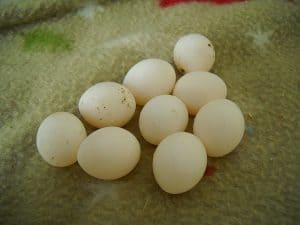
A cockatiel usually lays two to four eggs. However, the number of eggs can vary depending on the age and health of the cockatiel, as well as the time of year. For example, cockatiels generally lay more eggs during the spring and summer months than they do during the fall and winter. Additionally, cockatiels that are younger or in better health tend to lay more eggs than cockatiels that are older or in poorer health. If you are unsure about how many eggs your cockatiel is likely to lay, it is best to consult with a veterinarian or cockatiel breeder.
What is the incubation period for cockatiel eggs?
The incubation period for cockatiel eggs is usually between 18 and 21 days. However, the exact length of the incubation period can vary depending on the temperature and humidity of the environment, as well as the health of the cockatiel. If you are unsure about the incubation period for your cockatiel’s eggs, it is best to consult with a veterinarian or cockatiel breeder.
Conclusion
Cockatiels are social creatures that usually do best when they have a companion, so if you think your pet may be ready to find a mate, there are a few things you can look for. Pay attention to changes in behavior, diet, and cockatiel nesting behavior, and if you see any of these signs, it’s probably time to start looking for a potential partner for your cockatiel.
Male cockatiel mating behavior includes posturing and developing a brood patch, while female cockatiel mating behavior includes changes in eating habits and tilting her head. Mature male cockatiels also develop a bright yellow or orange cere. Cockatiels are ready to mate when they exhibit these behaviors. If you’re unsure whether your cockatiel is ready to mate, pay close attention to its behavior and diet. These are usually the first things to change when a cockatiel is getting ready to reproduce.
When cockatiels mate, the female usually lays two to four eggs. The incubation period for cockatiel eggs is typically 18 to 21 days. Once the chicks hatch, they are altricial, which means they are born blind and naked and require constant care from their parents. If you’re thinking about letting your cockatiel mate, be sure to consult with a veterinarian or cockatiel breeder first. They can help you determine if your cockatiel is ready to mate and advise you on how to best care for the cockatiels and their chicks.


